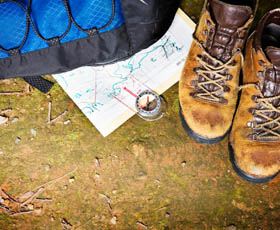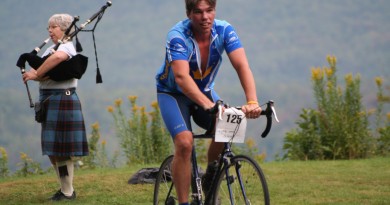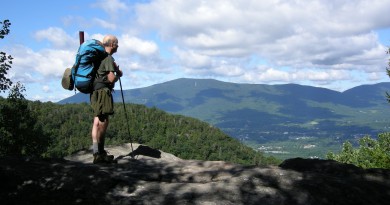The Long Trail is 100: Big Party in July!
By
Ben Rose
Posted January 24th, 2009
The Green Mountain Club has been around for nearly a hundred years. From 1910 until 1930, the club focused on building the Long Trail. After completing the trail from Massachusetts to Quebec, the club spent the next 55 years focused on maintaining and sustaining the trail. As a result, the Long Trail survived the Great Depression, World War II, the cultural tides of the ‘50s and ‘60s, an enormous increase in use during the ‘60s and early ‘70s, and dramatic fluctuations in public funding levels for recreation on state and federal land. Since the mid-‘80s, the club’s work has also included protection of the trail, such as systematically protecting thousands of acres of high elevation terrain through willing buyer/willing seller acquisitions of land and easements.
In 2009, the Green Mountain Club is preparing for a second century of caring for the Long Trail and handing it off to future generations of hikers. First, we are getting ready to throw a big party. From July 17 through July 24, the GMC will host the Biennial Conference of the Appalachian Trail Conservancy (ATC) at Castleton State College. Every two years, hundreds of hiking club members from Georgia to Maine gather to conduct the business of managing the Appalachian Trail, celebrate, and take locally-guided hikes. The conference location rotates between the north, south, and central trail clubs, and therefore comes to New England every six years. Likewise, it rotates among the New England trail clubs, which means that Vermont hosts one of these beasties every 20 years or so.
On July 17, somewhere between 750 and 1,000 folks, including many of the nation’s most active hiking club leaders, will convene at Castleton State College. There will be dozens of guided day hikes, field trips, workshops, and evening presentations. Putting on the conference is a massive undertaking. Dozens of GMC volunteers are already involved, but many spots remain available—trip leaders, registration, hospitality, and the like. If you think that hiking trails are important to your life and the world, sign up and be a part of this event! Registration for the conference goes “live” on March 1. Check it out at www.Vermont2009.org.
The conference will be a chance to meet, mingle, and hike with some of the Appalachian Trail’s most inspiring volunteers. Assembled in one place will be many of the key folks who have kept the Appalachian Trail alive and well for the past half century. They are, it is true, mostly old-timers. Typical of other hiking clubs, the average age of GMC members is 55, and 70 percent of GMC dues-paying members are 50 or older. That percentage has increased from 50 percent in 2000.
In 1994, 2000, 2004, and 2008, with generous help from professor Robert Manning and research associate Bill Valliere at the UVM School of Natural Resources, GMC conducted a comprehensive survey of GMC members. The results provide a clear picture of GMC members’ attitudes and demographics. Based on the 2008 results, we were alarmed by the apparent aging of the membership. Professor Manning asked UVM sociology professors Dan Krymkowski and Nick Danegelis to review the demographics. Their analysis revealed that the graying of GMC is not statistically different from the graying of Vermont. In other words, the problem isn’t that hiking is going out of fashion. The problem is that lots of us are Baby Boomers, and we are turning 50 in droves…
Which begs the Big Question about the Long Trail’s next hundred years: Will the folks who are now in their teens and 20s and 30s—that is, folks who are out there on the Long Trail today, trail-running and snowshoeing and backcountry skiing—join the club when they get to be 50-somethings?
The economic model which has sustained the Long Trail for four generations works roughly like this: hiking on the trail is free and all pedestrian visitors are welcome, and roughly 200,000 people per year set foot on the trail. Lots of them are young people, and they have good experiences on the trail. Later in life, some of them decide voluntarily to “give something back.” They join the club. From one generation to the next, we pass it on.
I extend two heartfelt invitations to Vermont Sports readers: first, visit www.Vermont2009.org and consider checking out this summer’s Appalachian Trail ATC Biennial Conference at Castleton State; second, accept a lifelong connection to Vermont’s beautiful hiking trails, by eventually (not necessarily right now, but later, any time in the next 100 years, when you might have more time and money) joining as a member of Vermont’s Green Mountain Club.
Ben Rose is the director of the Green Mountain Club.


